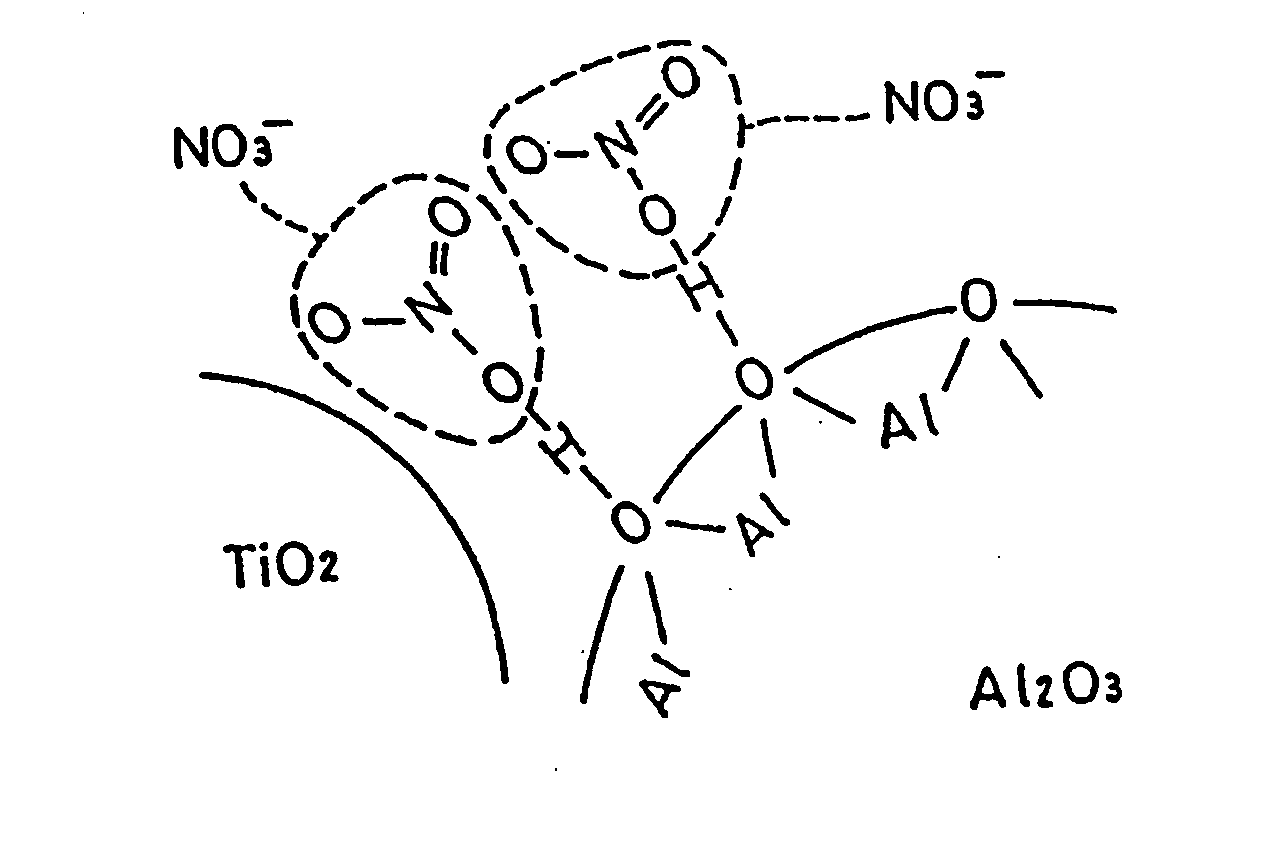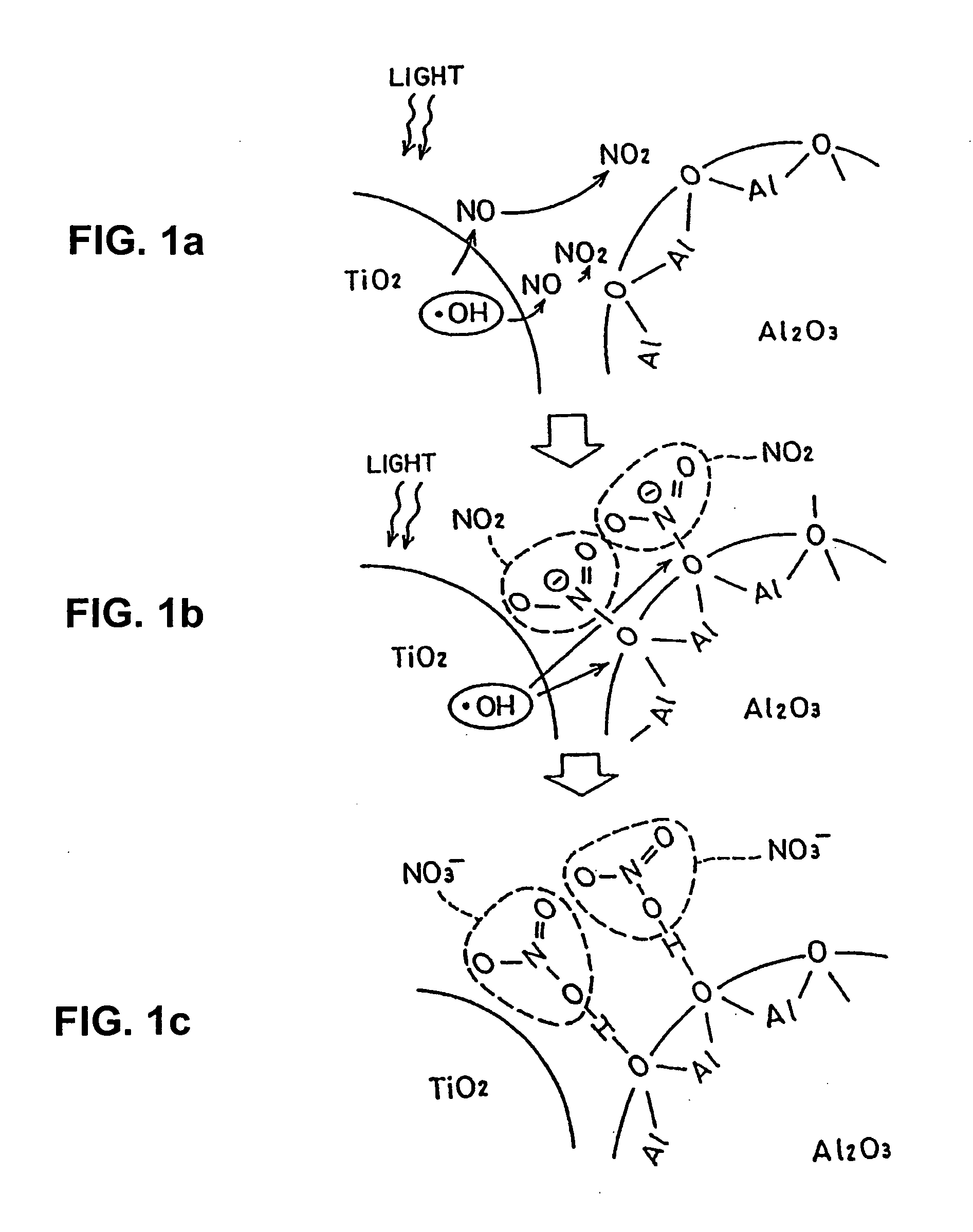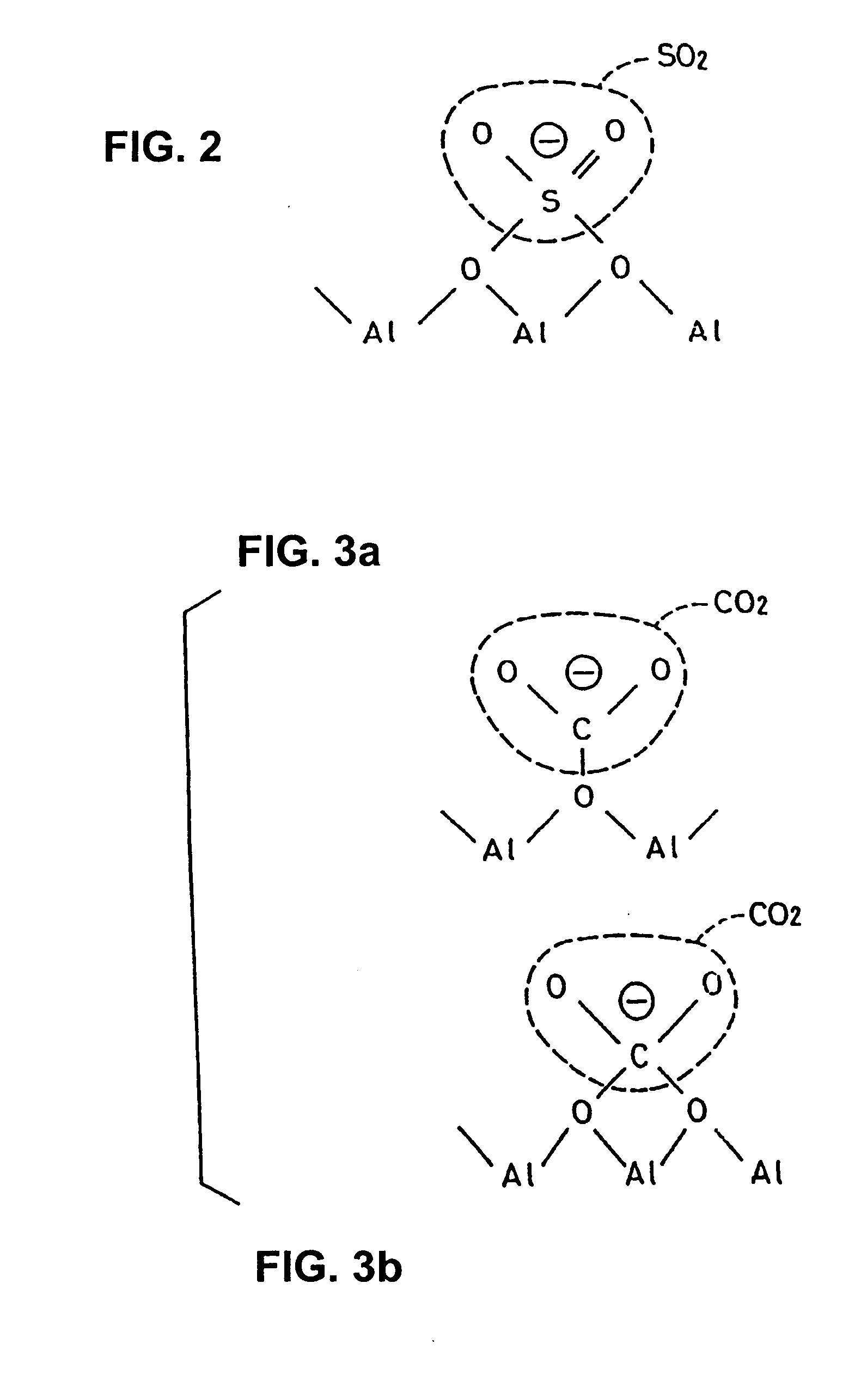Photocatalytic hydrophilifiable material
a hydrophilic material and photocatalytic technology, applied in the direction of organic compounds/hydrides/coordination complexes, physical/chemical process catalysts, metal/metal-oxide/metal-hydroxide catalysts, etc., can solve the problem of lowering the efficiency of oxidation with the active oxygen species, reducing the percentage reduction of nitrogen oxides, and not always effective methods, etc. problems, to achieve the effect of reducing the efficiency of catalytic reaction, easy production
- Summary
- Abstract
- Description
- Claims
- Application Information
AI Technical Summary
Benefits of technology
Problems solved by technology
Method used
Image
Examples
Embodiment Construction
[0125]Embodiments of the present invention will be described with reference to the following examples. Preparation of photocatalyst formulations used in the following examples will be described. Titanium dioxide (anatase form) was used as a photocatalyst which is formulated together with the other compound. Alumina as an amphoteric metal oxide and strontium oxide and barium oxide as basic metal oxides were used as metal oxides. Photocatalyst formulations were prepared through the following steps.
(i) Preparation of Photocatalyst and Particles of Metal Oxide
[0126]Starting materials for titanium dioxide, alumina, strontium oxide, and barium oxide were provided. They were pulverized by means of a grinding device, such as a ball mill, or subjected to a sol-gel process. Thus, fine particles of titanium dioxide, alumina, strontium oxide, and barium oxide were obtained. In this case, size regulation was carried out so that, for the particles of the compounds, the diameter is in the range of...
PUM
| Property | Measurement | Unit |
|---|---|---|
| Length | aaaaa | aaaaa |
| Time | aaaaa | aaaaa |
| Diameter | aaaaa | aaaaa |
Abstract
Description
Claims
Application Information
 Login to View More
Login to View More - R&D
- Intellectual Property
- Life Sciences
- Materials
- Tech Scout
- Unparalleled Data Quality
- Higher Quality Content
- 60% Fewer Hallucinations
Browse by: Latest US Patents, China's latest patents, Technical Efficacy Thesaurus, Application Domain, Technology Topic, Popular Technical Reports.
© 2025 PatSnap. All rights reserved.Legal|Privacy policy|Modern Slavery Act Transparency Statement|Sitemap|About US| Contact US: help@patsnap.com



